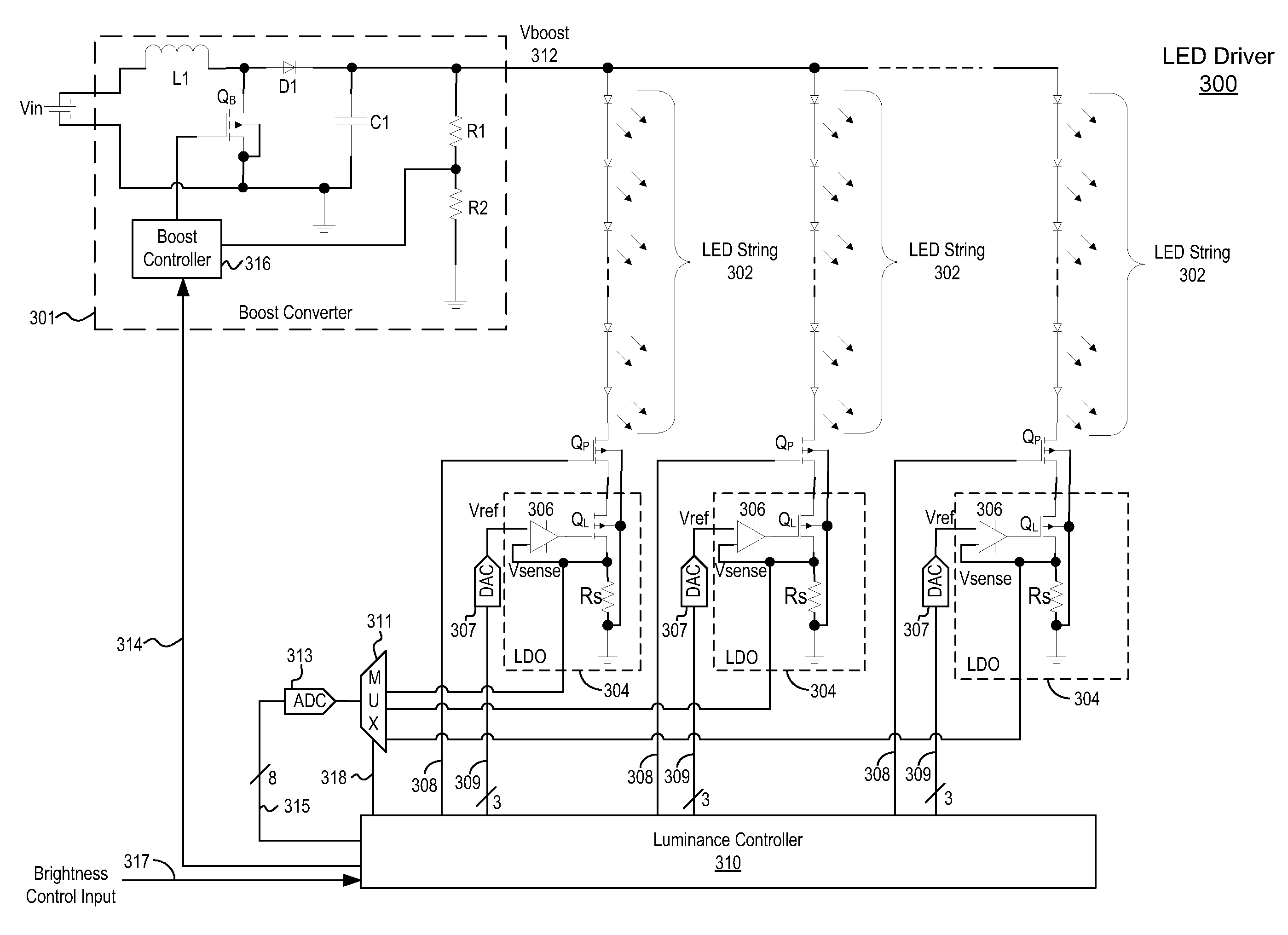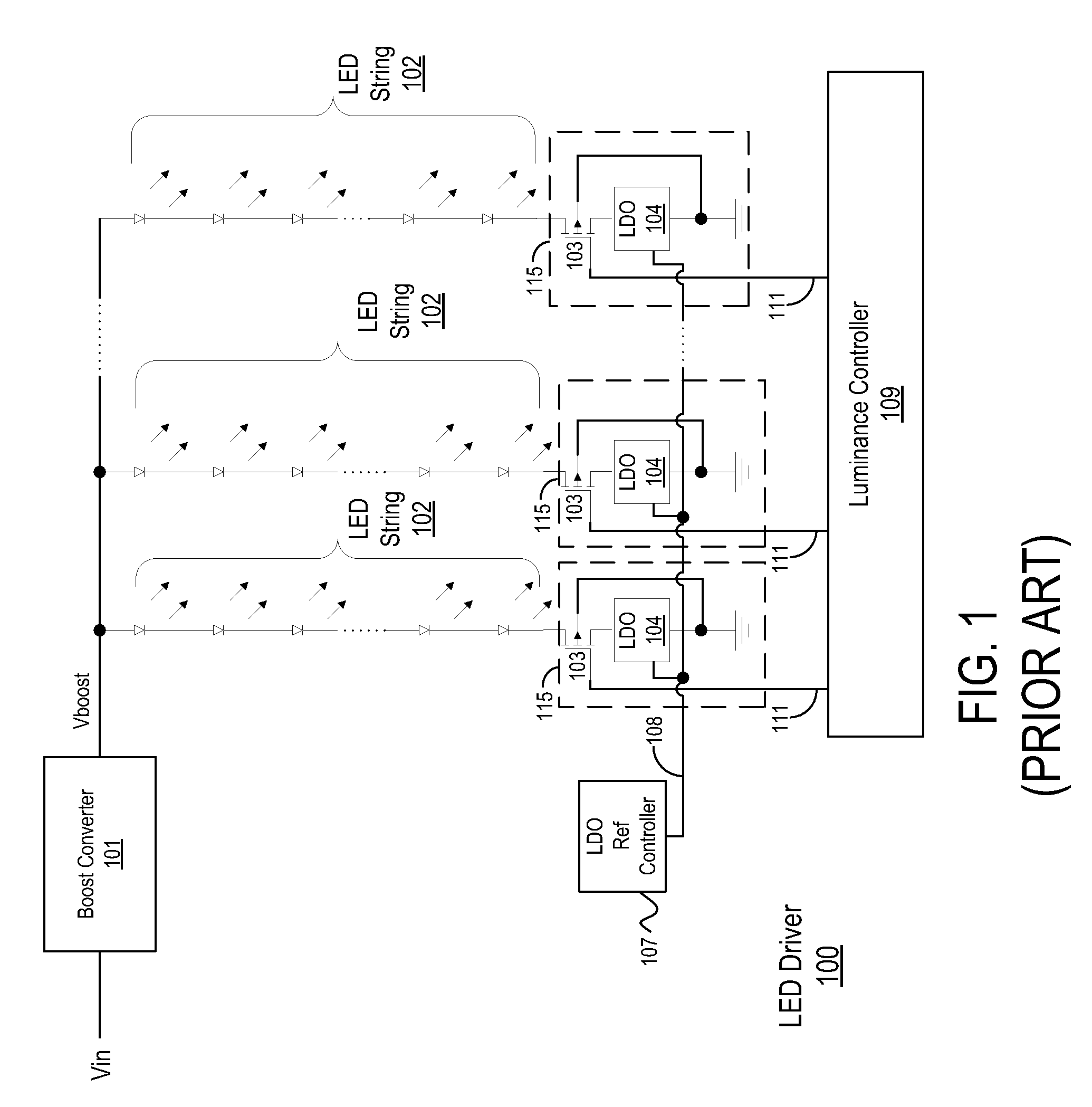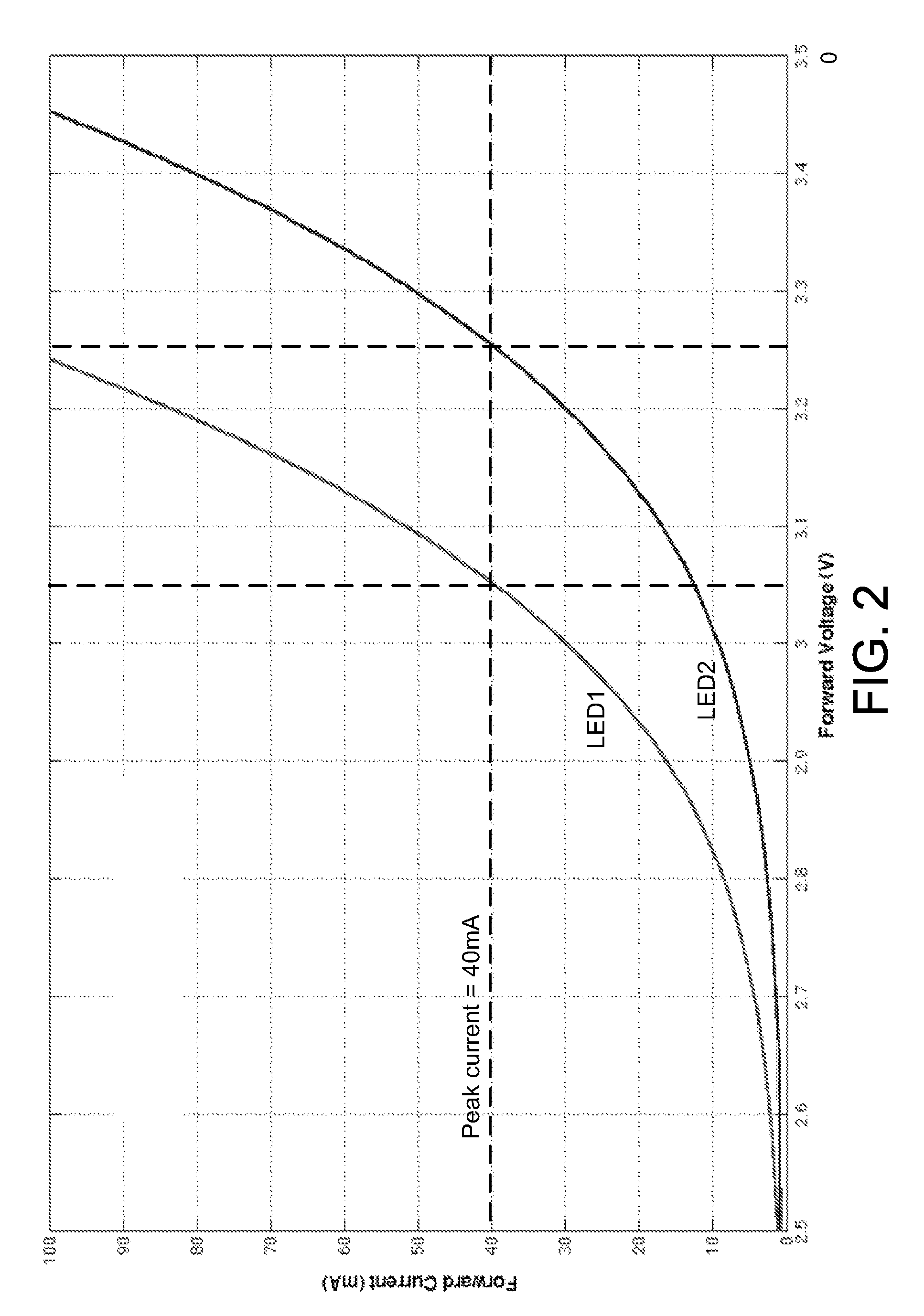Adaptive Switch Mode LED Driver
a technology of led driver and adapter switch, which is applied in the direction of process and machine control, test/measurement of semiconductor/solid-state devices, instruments, etc., can solve the problems of low overall efficiency, low power efficiency of current mirror approach, and prohibitiveness, and achieve fast dynamic response
- Summary
- Abstract
- Description
- Claims
- Application Information
AI Technical Summary
Benefits of technology
Problems solved by technology
Method used
Image
Examples
first embodiment
[0035]FIG. 3 is a circuit diagram of an adaptive switch mode LED driver 300. The embodiment comprises boost converter 301 driving one or more parallel LED channels. In each LED channel, LED string 302 is coupled in series with an LDO 304 for regulating current through LED string 302. LED string 302 and LDO 304 are also both coupled in series with PWM switch QP (e.g., an NMOS transistor) for controlling the on-times and off-times of the LEDs in LED string 302. Luminance controller 310 controls the luminance output of each LED channel independently by controlling PWM switches QP via control signals 308, and by controlling LDOs 304 via control signals 309 and digital-to-analog converters (DACs) 307. The LDOs 304 output feedback control signal 315 to luminous controller 310 via multiplexer 311 and ADC 313. Luminance controller 310 also outputs control signal 314 to boost converter 301 for controlling Vboost voltage 312. Although FIG. 3 illustrates only three LED channels, LED driver 300...
second embodiment
[0055]FIG. 5 illustrates an adaptive switch mode LED driver 500. LED driver 500 is similar to LED driver 300 of FIG. 3 described above, but includes a modified LDO 504 and lacks ADC 313. LDO 504 includes op-amp 306, pass transistor QL, and sense resistor RS in an LDO configuration similar to that of LDO 304 described above. However, LDO 504 additionally includes a comparator 506 that compares the output 551 of op-amp 306 to a reference voltage 553 and outputs the resulting signal to the multiplexer 311. In other alternative embodiments, input 551 to comparator 506 can be coupled to the drain or source of LDO transistor QL instead of to the output of op-amp 306.
[0056]In the embodiment of FIG. 5, luminance controller 310 applies a modified calibration process to determine the programmed current In and duty cycle PWM_outn for each LED channel. During the calibration stage, DACs 307 are all initialized to their lowest level. Vboost is then incrementally increased by control signal 314 u...
PUM
 Login to View More
Login to View More Abstract
Description
Claims
Application Information
 Login to View More
Login to View More - R&D
- Intellectual Property
- Life Sciences
- Materials
- Tech Scout
- Unparalleled Data Quality
- Higher Quality Content
- 60% Fewer Hallucinations
Browse by: Latest US Patents, China's latest patents, Technical Efficacy Thesaurus, Application Domain, Technology Topic, Popular Technical Reports.
© 2025 PatSnap. All rights reserved.Legal|Privacy policy|Modern Slavery Act Transparency Statement|Sitemap|About US| Contact US: help@patsnap.com



